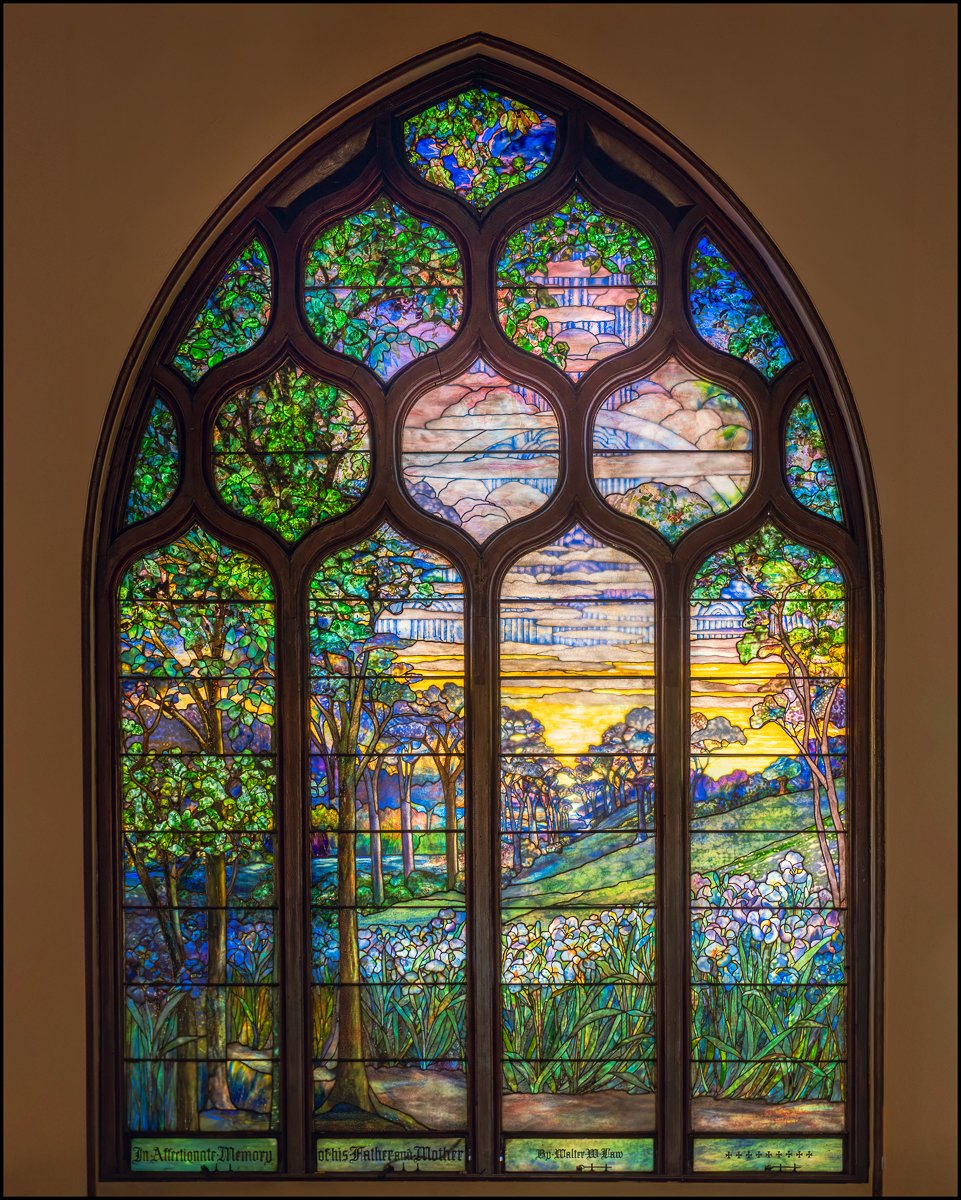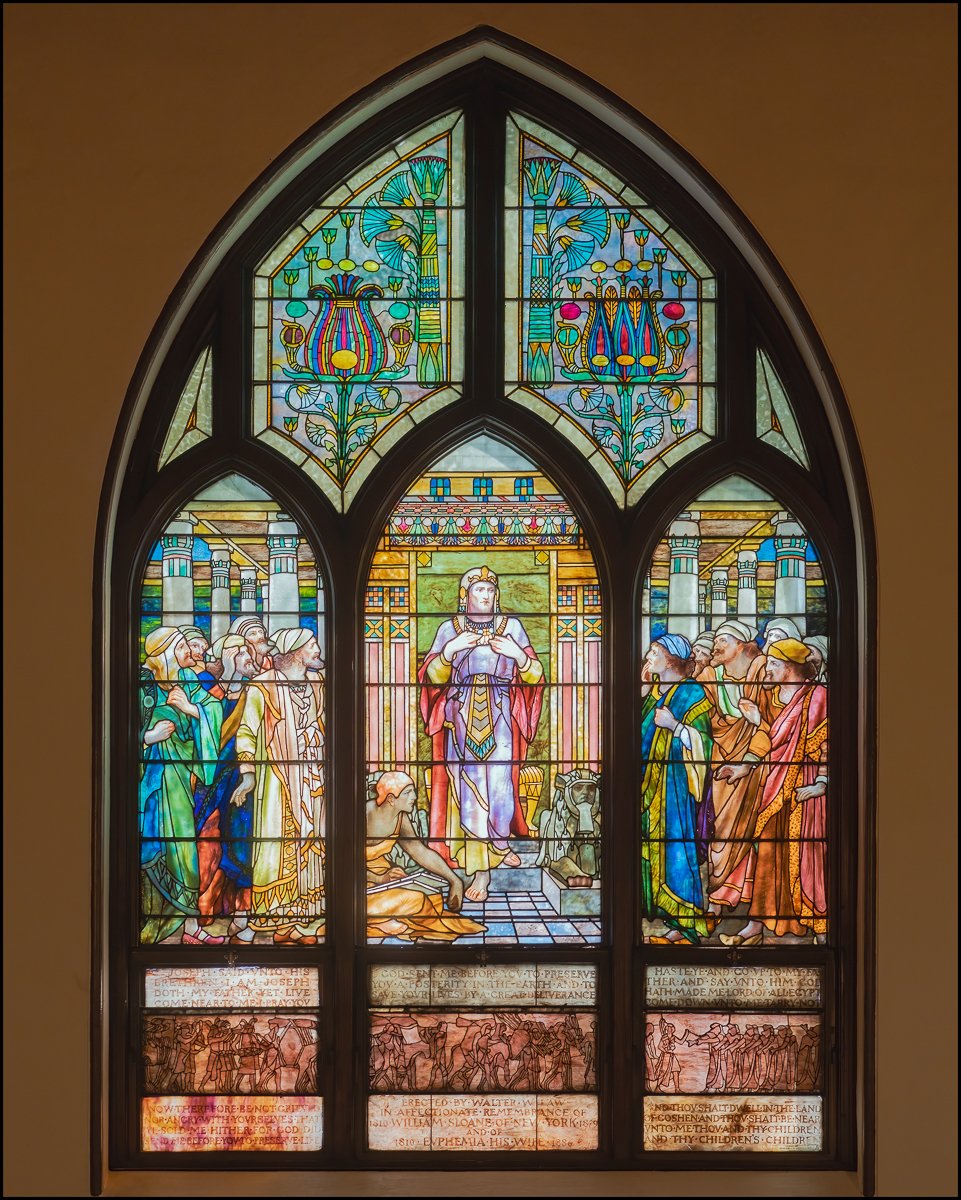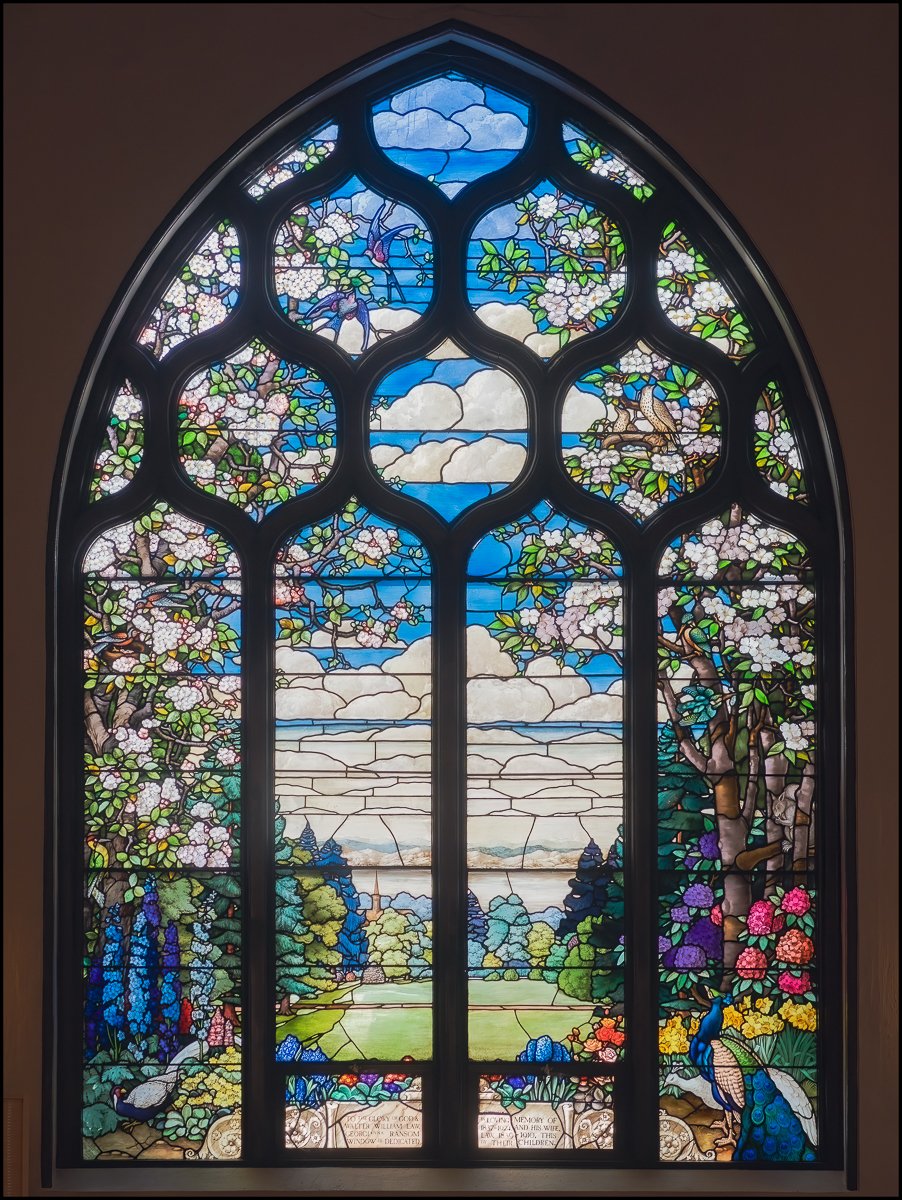Sunday Morning Walk Home from The Patio
The Story behind the Walk
Last Sunday morning I had just finished “chatting” with a friend who lives nearby. I was feeling hungry and decided to go into Briarcliff Village to get something to eat. I wanted to go to The Patio (see below). For once it was a nice, sunny day and I knew that The Patio fills up quickly on such days. This meant that I had to get moving in order to beat the rush. I hastily got ready and off I went. I had a pleasant breakfast and had just left the restaurant when my phone rang. It was a Canadian friend that I had arranged to talk to at 11:00 am, an appointment that I had completely forgotten in my rush to get to the restaurant. I apologized profusely and we set another time to speak, and we hung up.
My friend and her family had visited me in Briarcliff Manor a couple of times, but I couldn’t recall if I’d ever shown her around the village. So, I decided to walk home, taking photographs as I went. I planned to share these photographs to give her a feel for what Briarcliff Manor is like.
The Patio
One of my favorite eateries: The Patio. I like to go there with a book and just sit there reading and watching the world go by while I eat my lunch. They serve diner-like food, but with a Mexican twist. For example you can have bacon and eggs for breakfast, or you can have huevos rancheros or huevos mexicanos. When the COVID pandemic hit they almost immediately built an entire, new patio area on the side of the building so that people could eat outside. It’s quite a popular place.
In the picture below you can see two windows. The building that houses The Patio was once the original Briarcliff Manor Fire Station and the two windows made up the entrance where the fire trucks went in and out. Above were the town offices.
Municipal Buildings
Below left from left to right: The Fire Department, The Town Offices, and the Police Department. In the background behind the flag is the Post Office, possibly the ugliest building in the Village. Below right a bell outside the Fire Department in memory of the deceased members of the Briarcliff Manor Fire Department.
Along a Trail
Until recently this was a dirt track. It was covered in rocks, roots and if it rained it became rather muddy. The North County Trailway, which runs along the path of the New York and Putnam Railroad (the “Old Put”) passes close by and this short trail effectively connects the Trailway with the Village. Below Center: I have no idea what this stuff is. I imagine it’s covering dead trees (I guess that if they weren’t dead before they are now). Looks somewhat menacing. Below Right: This is what’s laughingly called the Pocantico River. To be fair it’s very small here. But is does get larger and more active later in its course, as it runs through the Rockefeller State Park Preserve and makes its way to the River Hudson.
The Village Library and more
This building houses the Village Library, the Vescio Community Center, the Village Recreation Department and the Briarcliff Manor-Scarborough Historical Society where I volunteer. The building has been significantly enlarged over the years. The central part of the building was once a train station: the Briarcliff stop on the Putnam Line. The library is situated right next to Eastern side of Law Memorial Park.
The Pool Pavillion and Village Swimming Pool
The Pavillion (which overlooks the Pool) and Pool are located in Law Memorial Park. The old pool house was seriously damaged by fire in 2001 and was subsequently torn down and rebuilt. It now looks pretty much as it did before the fire apart from the addition of a brand-new patio sporting picnic table complete with umbrellas. Additional seating can be found inside. The pool is extremely popular in Summer.
Bikes Galore
Some kind of “bike fest” seemed be taking place in Law Memorial park as I passed through. Looks like its something to do with the Empire State Ride.
The Law Park Pond
In spring it’s full of large frogs, which produce large numbers of tadpoles which in turn attract water birds such as cormorants, egrets and herons like the green heron below (taken at the Law Park Pond, but not during the current walk)
A Memorial
Stone Bench with Pillars - A memorial to Walter W. Law, the founder of Briarcliff Manor. The text of the plaque on the left pillar reads:
IN MEMORY OF WALTER WILLIAM LAW
1837 TO 1924
FOUNDER
OF
THE VILLAGE
OF
BRIARCLIFF MANOR
AND
DONOR OF THIS PARK
The Briarcliff Manor Congregational Church
The BCC was an outgrowth of a Sunday School that was held at the early White School. George A. Todd, Jr. was the schoolteacher, and later superintendent from about 1867 to 1906! Todd, sensing that locals needed a more permanent place to gather and worship than the small one-room schoolhouse, approached Walter W. Law with the idea for a brand-new church. Law, perhaps eager to bolster his real estate empire, jumped at the chance to help. Law gave the land and Todd donated the stones to build it. Others contributed lumber and labor to the project. The church was officially dedicated and incorporated in 1897 and “opened” as a Congregational Church. It’s the fourth oldest church in Briarcliff Manor (the other three: St. Mary’s Episcopal; All Saints Episcopal; and Scarborough Presbyterian) are all on the other side of the village near the Hudson River.
In 1898 Law gave the first Tiffany stained-glass window. There are 17 stained glass windows in all, representing several well-known studios and decorative arts companies: J&R Lamb, NY; William C. Willett, Philadelphia; John Hardman Studios, Birmingham and London; Woodhaven Studios, Bermuda. Perhaps the most well-known among these is Tiffany Studios. BCC has 7 magnificent Tiffany windows, installed between 1898 and 1906.
Below: Some of the BCCs stained glass windows
A Stone Lantern
Below: One of several stone oriental lanterns scattered around the village. There are three in close proximity to the BCC.
Trump National Golf Club
The club had its origins around 1895, with Briarcliff founder Walter W. Law's private nine-hole course on his estate, which became available to Briarcliff Lodge guests, and was then known as the Briarcliff Golf Club. In 1922, Devereux Emmet designed a course across the street with eighteen holes, and thus Briarcliff Country Club was founded that year. The name was changed in 1927 to avoid confusion, to Briar Hills Country Club. Briar Hills opened in May 1929 with a new clubhouse; construction began in May 1928 and utilized local stones for the building's exterior. The interior was noted for its design and spaciousness. In 1936, A. W. Tillinghast redesigned the course. In 1948, Henry Law's son Theodore sold the club to local businessmen who renamed it Briar Hall Golf and Country Club. In 1980, ownership of the club changed hands again.
Briar Hall had been taken over by the Marine Midland Bank, which then sold the property to Donald Trump. Trump bought Briar Hall Country Club for $7.5 million in the foreclosure in December 1996 and ran the club until 1999, until he closed the property to begin its redevelopment.
The Trump National Golf Club’s first nine holes opened on April 15, 2002, followed by the next nine on June 29, 2002.
Entrance to what was once the Briarcliff Lodge
Now the entrance to The Club, a senior living community this was once the entrance to The Briarcliff Lodge, a 300+ room luxury resort hotel. It was a notable example of Tudor Revival architecture, and at the time was one of the largest wooden structures in the United States. It was built by Walter W. Law in 1902 and the Law family owned it until 1937. When the lodge opened it was one of the largest resort hotels in the world.
In 1933, the lodge ended year-round service and housed a "health-diet sanitarium" until the Edgewood Park School for Girls began operation there from 1937 to 1954. From 1936 to 1939, the lodge was run again as a hotel in the summer months while the school was closed. From 1955 to 1994, The King's College used the lodge building and built dormitories and academic buildings. Abandoned and unmaintained after 1994, the Briarcliff Lodge was destroyed between 2003 and 2004.
Although the Lodge is long gone the gates seen in the picture are original and were found some years ago in storage at the Briarcliff Manor Department of Public Works.
Walter Law’s Mansion
Walter W. Law had begun acquiring property in Briarcliff Manor even before he left W.J. Sloane. In 1891 he purchased this house from the Wolsey family and relocated to Briarcliff Manor where he could be closer to his farming (and other) businesses. Over the years the house went through several incarnations and renovations. The most recent owners: The Begoni Family recently sold the house. Last week we were invited by the person managing the sale to look around and even to take anything from what remained (it all had to be thrown out by the end of the day). Below: Entrance to the Mansion on Scarborough Road.
I took some pictures, but it was all rather sad: the empty rooms, piles of “stuff” on the patio between the house and the fountain - all waiting to be tossed into the garbage skip. Instead of showing those more recent pictures I’m showing these taken back in July 2021.
All Saints Episcopal Church
All Saints’ Episcopal Church is a historic Episcopal church in Briarcliff Manor, New York. It was added to the National Register of Historic Places in 2002. John David Ogilby, whose summer estate and family home in Ireland were the namesakes of Briarcliff Manor, founded the church in 1854. The church was built on Ogilby’s summer estate in Briarcliff Manor.
Richard Upjohn designed the church building, which was constructed from 1848 to 1854 and expanded in 1911. The church has several memorial windows, including one by John LaFarge and a rose window by Frederick Wilson of Tiffany Studio.
It’s the second oldest church in the Village and the oldest functioning church since St. Mary’s closed in the 2015. For more pictures see: All Saints Day Service at All Saints Church, Briarcliff Manor.
Gatehouse to the V. Everit Macy Estate.
Almost home. Valentine Everit Macy (March 23, 1871 – March 21, 1930) was an American industrialist and philanthropist, involved in local government. In the 1910s and 1920s, he served in Westchester County, New York, as commissioner of the Department of Charities and Corrections, the Commissioner of Public Welfare, and as Commissioner of Parks. The building in the picture was once the gatehouse to his estate, “Chilmark”. For more on V. Everit Macy see: V. Everit Macy on the Briarcliff Manor-Scarborough Historical Society website.
The Speyer Wall
This brick wall runs from what was once the entrance to Philips Laboratories, along Scarborough Road where it continues along Holbrook Road to a second entrance. Most Briarcliff Residents are familiar with the wall, but few know why it’s there.
Inside the wall there used to be a mansion owned by wealthy financier, James Speyer. The mansion stood in a 130 acres estate called Waldheim, which featured sprawling farmlands, a nine-hole golf course, gardens, and a lake. It was landscaped by the Olmstead Brothers, founded by John Charles Olmsted and Frederick Law Olmsted, Jr. the nephew (and adopted son) and son of Frederick Law Olmstead the famous architect of New York’s Central Park. On the nearest pillar in the first picture below (view looking East) you can make out the word “Wald” and on the nearest pillar in the second picture (view looking West) you can make out the word “Heim”. After Speyer’s death in 1941 the estate was sold in 1946 to be subdivided into residential lots. Although the mansion is long gone, the wall and a few other ruins still remain to remind us that it once existed.













































